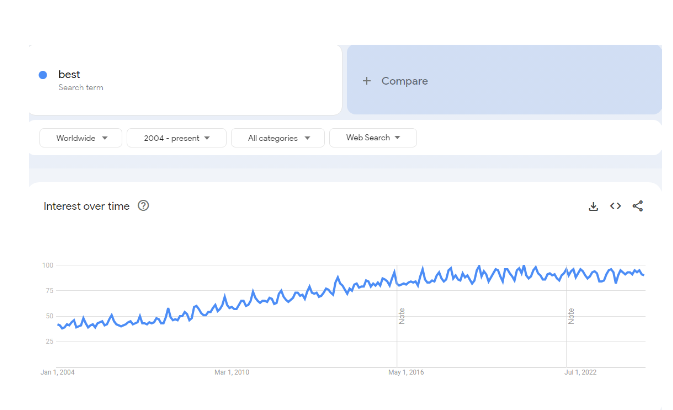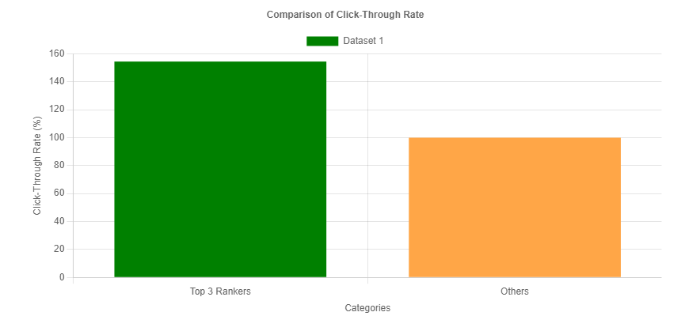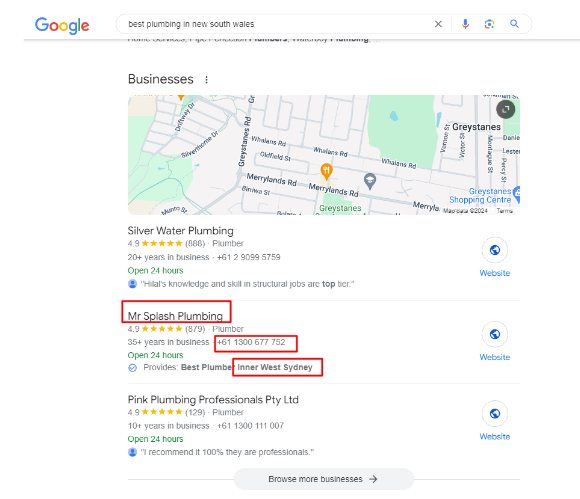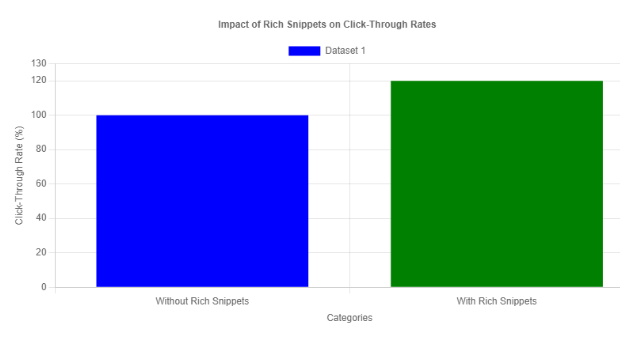
- Red Search
- Resources
- Rise in 'Best' Searches in SEO
Rise in ‘Best’ SEO Searches: Rank for Google Best Keywords
-
 Daniel Law
Daniel Law
As companies vie for their coveted spots in Google, searches for the right keywords that rank for “best [service] in [location]” have never been more valuable. This is not exactly an information search; this may reflect high-intent keywords, which are SEO terms that mean people are likely to make a final purchasing decision or take some action.
But then, how could you be certain it was coming out in those best-of-keyword lists and searches? Let’s dive into the strategies that will help rank for those all-important keywords.
Understanding the Surge in ‘Best’ Searches
Why High-Intent Searches Matter for Your Business
The consumer seeking the “best” service, product, or experience is usually further along in the buying process and more likely to buy. When they type something into their computer, whether it’s “best hotel in Sydney” or “best plumber near me,” what appears is a top-rated business to trust.
BrightLocal says 63% of consumers will choose a business based on high-ranking “best” searches. Optimising an online presence for high-intent customers is urgent.
Studies also show that an astonishing 68% of online activity begins with a search engine, and “best” alone is always one of the terms searched for. Ensuring the best keyword search optimisation delivers ready-to-buy customers with high intent—a great way to enlarge your conversion rates expediently.
The Growth Trend of ‘Best’ Searches

The graph shows an over 50% increase in the “best” term from 2014.
According to Google Trends, the search term “best” has increased by over 50% since 2014. This means that consumers value quality and dependability much more. This trend means businesses must optimise their online presence to appear in high-intent searches.

The graph shows that the top 3 rankers have 54.4% more click-through rates than the bottom ranking pages.
Furthermore, the top three rankers for such searches garner 54.4% more of the click-through rate, doubling the lead generation chance.
Key Strategies for Ranking in ‘Best’ Searches
Ranking in these high-competitive searches will take much more than adding new keywords to your site. A good SEO strategy outsmarts all others. Here’s how you can do it:
Rank for Best [Service]
You’ll also need to determine what services you are providing so you can rank for “best” or related keywords. Use keyword exploration tools like Google Keyword Planner to find the best “best [service]” for your niche. These will help you get ideas that can be part of industry trends and customer search behaviours. Then, point your content directly at those keywords to effectively show search engines what you’re all about.
You can also use other free keyword research tools like Keyword.io, Moz Keyword Explorer, Ahrefs Keywords Explorer and other tools to pump up valuable keyword ideas. The best keyword research tool will help you find keyword data, long tail keywords and other relevant keywords for search engine optimisation.
However, you should note that not all FREE keyword tools provide search volumes. If you are after data, you may also opt for paid keyword research tools for keyword research to get your search volume data.
Optimise for Top-Rated Services
Customer reviews are critical to SEO. Google likes high scores, and you will get more help in “best” searches with positive reviews. Ask the happy clients to leave reviews on Google, Yelp, Trustpilot, or other related platforms. Responding to good and bad reviews shows interest in customer satisfaction.
Pro tip: Respond to the positive and negative reviews equally. Occasionally, your responsiveness to a client’s thoughts can make a huge difference, separating you from your competitors.
How to Rank for Best Keywords
For “best” keyword rankings, you need deeper and authority-based content in your blog posts, comparison articles, or product reviews. For instance, “Best plumbing services in [City]” if you are a contractor targeting customers locally. Back it with data, testimonials, and comparisons of services to make trust and authority possible.
The second part is choosing the best keyword. You can use your targeted keyword, like “best plumbing services in [City],” and include several related terms that can help increase your visibility. Such an approach gives you high-intent traffic and tells search engines that your content matters.
SEO Strategy for Best Searches

Google My Business listing showing the best affordable plumbing in New South Wales
Local SEO factors into ranking “best” searches. Most people search for local services with phrases like “best pizza near me.” Optimise for local searches by keeping the right information in your Google Business Profile listing: business name, address, phone number (NAP), and operating hours.
Also, ensure the meta description and content contain geo-targeted keywords, such as “best affordable plumbing in [City].”
Advanced SEO Techniques for Improving Visibility in ‘Best’ Searches
High-Intent Keywords SEO
Target high-intent keywords and your SEO will improve because they attract ready-to-buy users.
For example, phrases like “best eco-friendly cleaning services in [City]” will target people who need something, thereby reducing the competition.
HubSpot has shared that long-tail keywords have a higher CTR than generic terms. WordStream says people using a long-tail keyword list when searching have a higher conversion rate than someone with a shorter, more generic search phrase. Using high-intent keywords is crucial in targeting customers further down the conversion funnel.
Best-Rated Service SEO Tactics
Using schema markup can increase visibility and click-through rates. Review and FAQ schema enables businesses to view rich snippets—from enhanced or organic search results—accompanied by star ratings, reviews, or FAQs that appear right in Google.
In a Moz study, rich snippets can increase click-through rates by 20-30%. Schema markup also helps search engines better understand content, which increases your ranking.

Best Searches
One of the ways to improve your rankings for the best keyword searches is to have depth in your content. This means you should write factual, authoritative, and user-focused content aligned with Google’s E-E-A-T, which stands for Experience, Expertise, Authoritativeness, and Trustworthiness.
To rank by high-intent keywords such as “best [service] in [location],” you have to prove expertise and trustworthiness through thorough and valuable content.
According to Backlinko, there are 1,447 words on average in pages ranked in Google’s top 10. In other words, do not make your content simple descriptions but true-to-life examples, expert insights, and statistics to support your claims.
According to HubSpot, sites with updated content draw in up to 106% more organic traffic. Update your articles with fresh insights, stats, and recent reviews. Then, mix this with structured data like FAQ schema to strengthen your chances of ranking on some of the most competitive “best” searches.
Google’s Local Pack Optimisation
Your GMB listing should be as comprehensive as possible to maximise the chances that your business will rank in the Local Pack. This means having a valid and up-to-date listing of NAP details, including the business’s name, address, phone number, and hours of operation. According to Semrush, Google searches have 46% local intent—many users seek services around them.
Bonus: How to Conduct Effective Keyword Research
Step 1: Use Free Keyword Research Tools or Paid Ones
A good way to start digging for relevant keywords is using a free keyword research tool like Ubersuggest or AnswerThePublic. These tools give you the most relevant keywords about your business or niche—establishing a good foundation of where to start keyword research.
However, if you want much deeper insights, consider using paid tools like SEMrush or Ahrefs. The Keyword Magic Tool offers rich data about search volume, competition, and relevant keywords on the same platforms.
Step 2: Assess Keyword Difficulty
Now, analyse the keyword difficulty you came up with. These metrics are mainly available through paid best keyword research tools like SEMrush and Ahrefs. Knowing the competition level for each keyword is so important because this helps you focus on keywords that would realistically rank for your website, given your current authority.
Step 3: Analyse Existing Content with Google Search Console
To do this, utilise Google Search Console to see which keywords have already brought traffic to your site. This way, you can identify which other keyword opportunities exist for you that align with the existing content.
Step 4: Check Monthly Search Volume
Optimise for high-volume keywords. This implies the number of keywords used per month, which shows your demands regarding the keywords used.
Step 5: Utilise Google Ads
Finally, Google Adwords can be used to investigate keyword potential further. Even a simple free keyword suggestion can help you determine which may be profitable in driving targeted traffic to your website.
Stay Ahead with Red Search ‘Best’ Search Optimisation
“Best” searches are generally a decent opportunity to capture high-intent customers. You will likely rank well if you focus on reviews, create highly detailed comparison content, provide keyword suggestions, and optimise for local search.
If you’re a local Australian business looking to grow through SEO, speak with our senior SEO specialists today. We can discuss your options and provide you with strategic insights on how you can leverage bespoke search strategies to generate more leads and elevate your brand.
Written by





